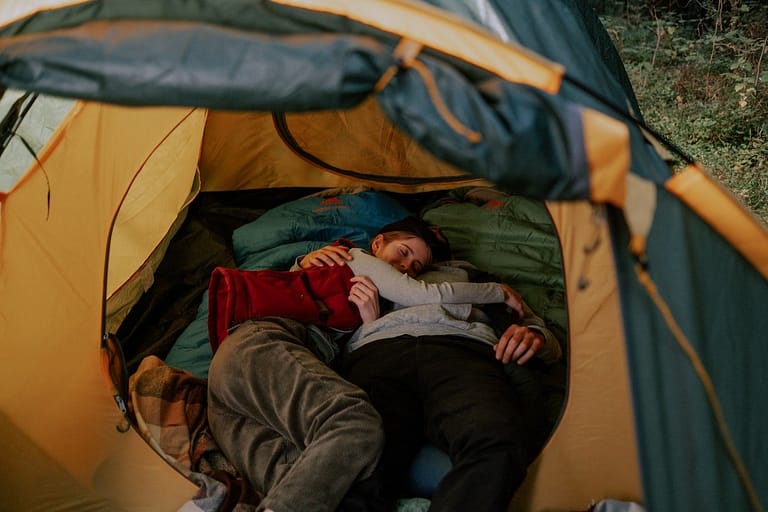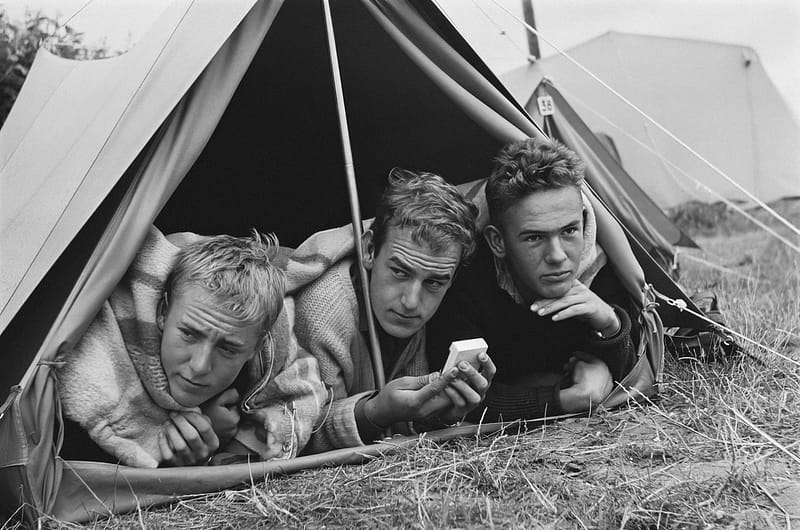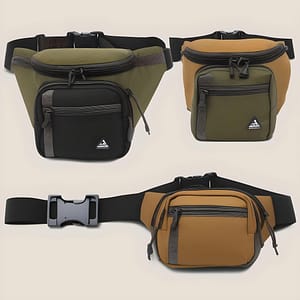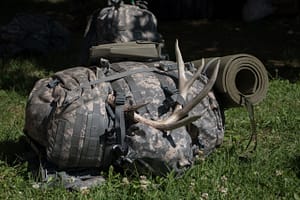The world of tents is wide and diverse. For most of us, choosing the right tent by it’s size can be a bit exhausting. Tents come in different sizes, different materials and different uses. Therefore, choosing a suitable tent, especially for someone who is inexperienced, may end up choosing a tent that does not meet his needs. In the next blog I hope to give information that will help you in choosing the tent for the next camping.
I’m traveling solo, what size tent is right for me?
When it comes to camping alone, size does matter. You don’t want a tent so big that you can fit a whole party in there, but you also don’t want to feel like you’re sleeping in a sardine can. A good rule of thumb is to go for a tent that accommodates one person comfortably with enough space for their gear. A tent with a floor area of around 20 square feet should do the trick. This will give you enough room to stretch out, store your belongings, and even have a little dance party if the mood strikes. Remember, you’re camping alone, but that doesn’t mean you can’t have a good time.
10 x 10 camping tent
Ah, the classic 10×10 camping tent. This little gem is the Swiss Army knife of tents. It’s perfect for those solo adventurers who want a cozy little home away from home. If a friend plans to drop by for the night The 10×10 tent can easily accommodate a couple, as long as you don’t mind getting a little cozy. Just think of it as a bonding experience. Plus, it’s small enough to fit in most campsites without taking up the entire space. So, whether you’re flying solo or bringing along a camping buddy, the 10×10 tent is a trusty companion that won’t let you down.
How many people can fit in a two-person tent?

You might be thinking, “Wait a minute, if it’s a two-person tent, shouldn’t it fit two people?” Well, my friend, the truth is that tent sizes can be a bit misleading. Manufacturers often base their tent sizes on the assumption that campers will be cozied up like sardines in a can. And let’s face it, not all of us want to spend our camping experience feeling too crowded.
So, let’s break it down. A two-person tent is typically designed to accommodate two people in a snuggly manner, with just enough space to sleep side by side. However, if you’re camping with a partner and want a little extra breathing room, you might want to consider sizing up. A three-person tent could be the perfect fit for you and your camping buddy. It’ll give you that extra space to sprawl out comfortably and avoid accidentally elbowing each other in the middle of the night. Trust me, your camping partner will thank you.
What are the dimensions of a family tent?
Ah, family camping trips. The stuff of legends. The bonding, the laughter, the mosquito bites – it’s all part of the adventure. But let’s not forget one crucial element: the tent. You don’t want to end up in a cramped space where it feels like you’re playing a never-ending game of Tetris with your loved ones. So, what are the dimensions of a family tent?
Typically, family tents are described using two measurements:
Floor Area:
This is the total area of the tent’s floor in square feet or square meters. Common sizes can range from around 50 square feet (4.6 square meters) to well over 200 square feet (18.6 square meters) for larger models.
Peak Height:
This is the highest point of the tent, typically measured from the ground to the peak of the roof. Peak height can vary from around 4 feet (1.2 meters) to 7 feet (2.1 meters) or more, allowing most campers to stand and move comfortably inside the tent.
If you’re purchasing a tent online or in a store, you can usually find the floor area and peak height information in the product specifications provided by the manufacturer. If the tent is displayed in a store, you can physically measure it using the above steps to verify the dimensions.
Keep in mind that the floor area and peak height are essential factors to consider when choosing a tent, but other factors like the tent’s shape, design, and interior layout should also be taken into account to ensure it meets your camping needs.
In general, family tents are designed to accommodate 4 to 10 people, but there are even larger tents available for bigger groups. It’s important to consider the number of people in your group, the amount of gear you’ll be storing inside, and any specific features you may need. when choosing a family tent.
Keep in mind that the exact dimensions will depend on the specific model and design, so it’s best to check the product specifications or contact the manufacturer directly for precise measurements.
When it comes to tent sizes, there’s no one-size-fits-all solution. It all depends on the size of your family and how cozy you want to be. Typically, family tents range from 6-person to 10-person capacities, ensuring ample space for parents, kids, and even the furriest of family members. You may ask do i really need that much room? Well, let me break it down for you.
Do 6 person tent is a good size for a family?
Picture this: you, your partner, a couple of kiddos, maybe even a furry friend joining in on the fun. Now, imagine all of you crammed into a tiny tent. Not exactly the ideal camping experience.
That’s where the 6-person tent comes in. Sure, it may sound like a lot of room, but let’s think about it. You’ve got two adults, two kids, and perhaps a four-legged adventurer. That’s already five beings roaming around, trying to find a comfortable spot to sleep, play, and do all the other camping shenanigans.
Now, if you’re all okay with snuggling up like a pile of puppies, then a 6-person tent might just do the trick. But if you value your personal space, or if you have a restless sleeper in the family (we all know who that is), you might want to consider sizing up.
So, what’s the solution? Well, it’s all about finding the right balance between space and coziness. If you’re the type of family that loves to spread out and have room to dance a little jig in the morning, then I’d recommend going for a larger tent. You’ll appreciate the extra elbow room, I promise.
Are there any special considerations for buying a tent for winter camping?
Let’s talk about finding the perfect tent for winter camping. Because let’s face it, winter camping is a whole different ballgame compared to the sunny summer trips we’re used to.
First things first, winter camping means colder temperatures, harsh winds, and potentially heavy snowfall. So, you need a tent that can withstand all of Mother Nature’s wintery surprises. Look for tents specifically designed for winter camping, as they are usually made with sturdier materials and have better insulation.
Size-wise, you may want to think about going a bit bigger than you would for summer camping. Why? Well, in winter, you may spend more time inside the tent due to the chilly weather. Plus, you’ll need extra space for all those bulky winter gear and clothing. So, consider a tent that can comfortably accommodate you, your sleeping bag, your gear, and maybe even a small indoor winter wonderland.
When it comes to the tent’s design, a dome tent or a geodesic tent is a great choice for winter camping. These tent shapes are more resistant to strong winds and heavy snow loads. Plus, they provide better stability, which is crucial when you’re dealing with unpredictable winter weather.
And what about special considerations for buying a tent for summer camping?
First and foremost, ventilation is key. Trust me, you don’t want to wake up in a sauna-like tent, covered in sweat and regret. Look for tents with plenty of mesh panels and windows to allow for a refreshing breeze to flow through. Secondly, size matters. In the summer, you’re likely to have more gear, like beach chairs and coolers, so opt for a tent that offers ample storage space. Lastly, consider the weight. Summer camping often involves hiking and exploring, so you’ll want a tent that’s lightweight and easy to carry. After all, you don’t want your tent to feel like an extra camper on your back.
How do I know which size tent to buy for a group of six?
When it comes to tent shopping, it’s important to consider both comfort and sanity. After all, no one wants to wrestle with their tent like they’re in a WWE match. So, here’s a quick guide to help you make the right choice:
1. Start with the number of people:
You mentioned you have a group of six, so let’s do some math here. While you could technically squeeze all six of you into a cozy two-person tent, I don’t think it’s the best recipe for a good night’s sleep. It’s always better to size up and give everyone some breathing room.
2. Consider the tent’s capacity:
Tent sizes are usually labeled based on the number of people they can accommodate. A four-person tent is a popular choice for a group of six. Why, you ask? Well, manufacturers often calculate tent capacities based on the number of sleeping bags you can fit inside. So, a four-person tent should comfortably fit four adults lying side by side, with enough space for gear storage.
3. Look for extra features:
When choosing a tent for your group, keep an eye out for those extra bells and whistles. Here are some fun features to consider:
- Built-in LED Lights: Picture this: you’re in the middle of the night, stumbling back to your tent after a bathroom break, and you realize you forgot your flashlight. Don’t worry, my friend, because some tents come with built-in LED lights. No more fumbling around in the dark or tripping over tent stakes. It’s like having your own personal light show, right in your tent!
- Multi-Room Dividers: Want some privacy or separate sleeping quarters within your tent? Look for a tent with multi-room dividers. This way, you can enjoy your own little slice of tent heaven while still being part of the camping fun. It’s like having your own apartment in the great outdoors. Just remember to put a “do not disturb” sign on your tent flap!
- Screened Porch: Ah, the joy of sitting outside without being bothered by pesky bugs. If you love the idea of enjoying the fresh air while sipping on a cold beverage but don’t want to be eaten alive by mosquitoes, a tent with a screened porch is your new best friend. It’s like having your own mini outdoor oasis, complete with bug-free relaxation.
Extra-large tent

When I say extra-large, I mean spacious enough to fit a small village. Okay, maybe not that big, but you get the idea. The first thing you need to consider is the number of people in your group. Are we talking about a family reunion or a camping trip with your entire extended family? Either way, we’ve got some options for you.
One popular choice for large groups is the frame tent. These bad boys are like the mansions of the camping world. With their sturdy frame and spacious design, they offer plenty of room for your tribe to spread out and get comfortable. Just imagine having all the cousins, aunts, and uncles under one roof, or should I say, tent.
When it comes to sizing, you’ll want to think big. I’m talking about tents with a floor area of at least 150 square feet or more. Trust me, you don’t want to be cramming everyone in like sardines. It’s all fun and games until Uncle Bob’s snoring keeps everyone awake.
But with great size comes great responsibility. These colossal tents are not for the faint of heart. If you’re not careful, you might find yourself setting up camp in the wrong zip code! Make sure you’ve got a team of Sherpas on standby to help with the setup, or better yet, enlist a local circus crew to handle the tent-pitching extravaganza.
And let’s not forget about the special features! These tents are not just big – they’re luxurious, like a five-star hotel room with nylon walls. Some extra-large tents come with separate rooms, each with its own theme and butler service. For the tech-savvy campers, some of these tents come with Wi-Fi, solar power charging stations, and satellite TV – because who said camping means disconnecting from the world?
In conclusion, extra-large camping tents are the unicorns of the camping world – majestic, rare, and truly unforgettable. So, if you’re ready to take your camping game to a whole new level – and I mean skyscraper level – get yourself one of these mammoth shelters and prepare to be the talk of the campground.
What materials are camping tents made of?
You’ve got all kinds of materials vying for your attention, each with its own superpower.
First up, we’ve got good ol’ polyester – the stretchy yoga pants of tent fabrics. It’s lightweight, water-resistant, and won’t shrink when you wash it (trust me, tents hate shrinkage as much as your favorite t-shirt).
Then there’s nylon – the acrobat of the tent world. It’s strong, flexible, and can do cartwheels with the best of them. It’s all about that balance. Now, let’s talk about canvas – the wise elder of tent materials. It’s sturdy, dependable, and knows how to stand the test of time, just like your grandma’s old recipes. But be warned, canvas tents can be heavier than the latest fad diet.
Lastly, we’ve got the mysterious-sounding ripstop – the ninja of the tent realm. It’s like having tiny reinforcements woven into the fabric, making it resistant to tears like a stubborn shirt that refuses to get caught on that nail sticking out. So, my fellow adventurers, choose your tent material wisely.
In conclusion, when it comes to choosing the right size tent for your camping adventure, it’s important to consider your needs and the number of people you’ll be camping with. For solo campers, a cozy one-person tent is all you need to snuggle up with nature. Couples can enjoy some quality alone time in a two-person tent, while families will need to go big with a spacious tent that can accommodate everyone, including that cousin who always brings three suitcases for a weekend trip.





